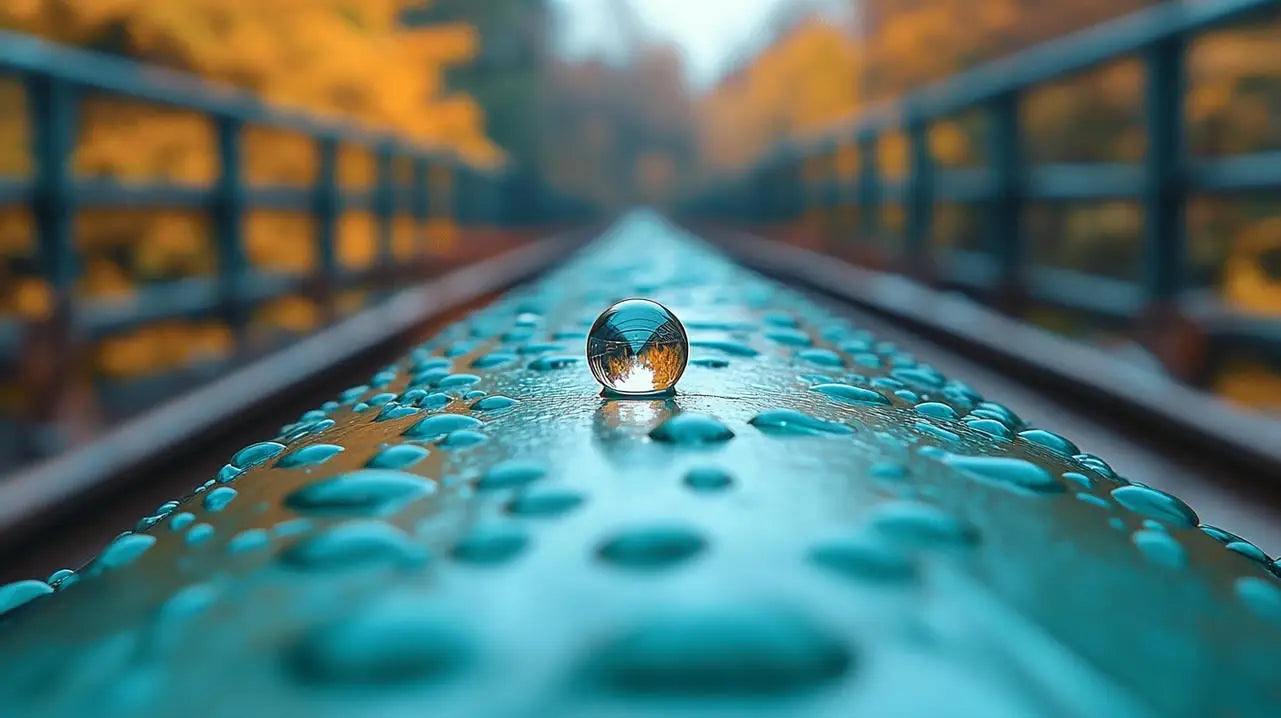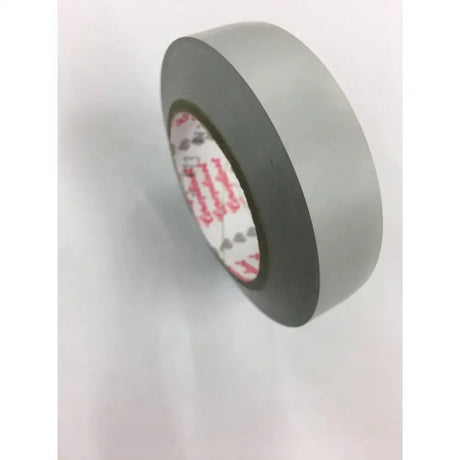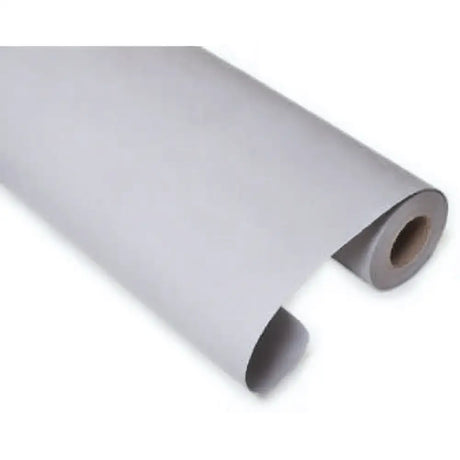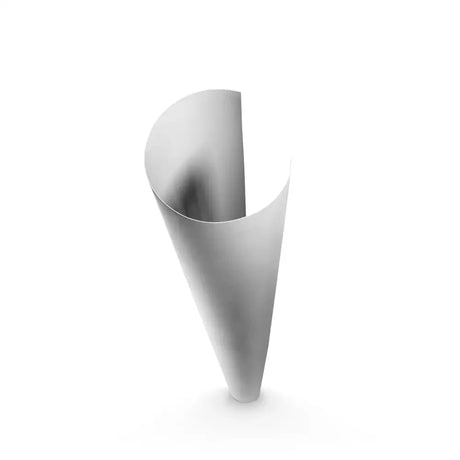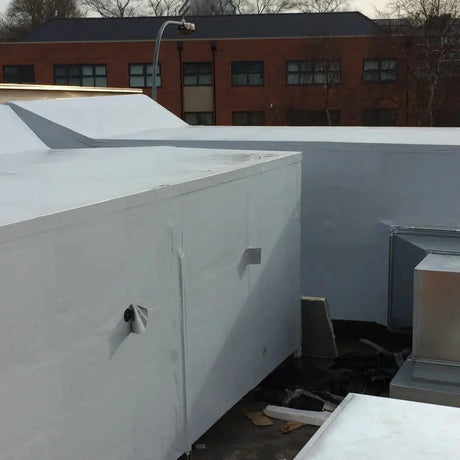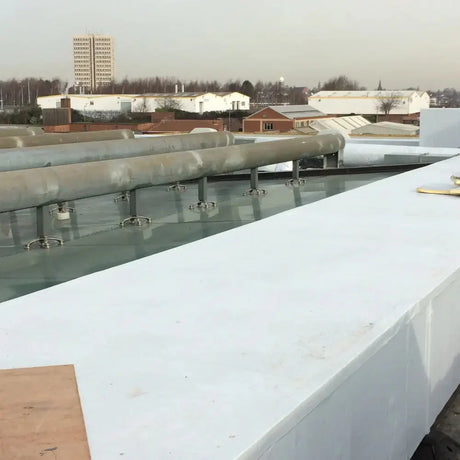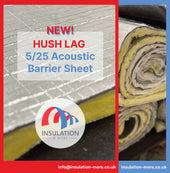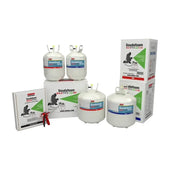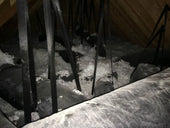In the world of commercial pipe insulation, waterproof cladding plays a crucial role in protecting and preserving pipework systems. This comprehensive guide will delve into the intricacies of waterproof pipe cladding, exploring its importance, types, applications, and benefits in commercial settings.
What is Pipe Cladding?
Pipe cladding, also known as pipework cladding or pipe lagging, is a protective outer layer applied over insulated pipes. Its primary purpose is to shield the insulation and the pipe itself from external factors such as moisture, physical damage, and UV radiation. In commercial applications, pipe cladding is essential for maintaining the integrity and efficiency of insulation systems, particularly in challenging environments.
The Difference Between Cladding and PVC
While PVC (Polyvinyl Chloride) is a common material used in pipe insulation, it's important to distinguish between cladding and PVC insulation. PVC is often used as an insulation material itself, whereas cladding is an additional protective layer applied over the insulation. Cladding materials can include PVC, but also encompass a wider range of options such as metal and specialised polymers.
Types of Waterproof Pipe Cladding
There are several types of waterproof pipe cladding materials available for commercial applications. Each type has its unique properties and is suited for specific environments and requirements.
1. Aluminium Cladding
Aluminium cladding is a popular choice for its lightweight nature, corrosion resistance, and excellent moisture barrier properties. It's particularly effective in both interior and exterior applications.
Key Features:
- High durability and longevity
- Excellent resistance to UV radiation
- Good thermal reflectivity, enhancing insulation performance
2. Aluzinc Cladding
Aluzinc cladding is a steel sheet coated with an alloy of aluminium and zinc. This combination offers superior corrosion resistance compared to galvanized steel.
Key Features:
- Outstanding corrosion resistance
- High temperature tolerance
- Suitable for harsh industrial environments
3. PIB (Polyisobutylene) Cladding
PIB cladding is a synthetic rubber material known for its excellent waterproofing properties. It's often used in applications where extreme weather resistance is required.
Key Features:
- Exceptional water and vapour barrier
- Flexible and easy to install
- Resistant to many chemicals and environmental factors
4. Isogenopak Cladding
Isogenopak is a specialised cladding material designed for use in hygienic environments such as food processing plants and pharmaceutical facilities.
Key Features:
- Smooth, non-porous surface that's easy to clean
- Resistant to mould and bacteria growth
- Compliant with food industry regulations
Applications of Waterproof Pipe Cladding

Waterproof pipe cladding finds applications across various industries and settings. Here are some common areas where it's extensively used:
-
Food and Beverage Industry: In food processing plants, waterproof cladding helps maintain hygienic conditions and protects against frequent cleaning and sanitization processes.
-
Pharmaceutical Manufacturing: Similar to the food industry, pharmaceutical facilities require clean, easily sanitized surfaces that waterproof cladding can provide.
-
Chemical Plants: The corrosion-resistant properties of certain cladding materials make them ideal for protecting pipes in chemical processing environments.
-
Offshore Platforms: In marine environments, pipes are exposed to salt water and harsh weather conditions, necessitating robust waterproof cladding.
-
HVAC Systems: Commercial HVAC insulation often requires waterproof cladding to prevent condensation and maintain energy efficiency.
-
Outdoor Piping Systems: Any exposed pipework in exterior settings benefits from waterproof cladding to protect against rain, snow, and UV radiation.
Benefits of Waterproof Pipe Cladding
The application of waterproof cladding to commercial pipe insulation systems offers numerous advantages:
1. Moisture Protection
The primary benefit of waterproof cladding is its ability to keep moisture away from the insulation and the pipe itself. This is crucial because:
- Wet insulation loses its thermal efficiency, leading to energy waste.
- Moisture can cause corrosion in metal pipes, potentially leading to leaks and system failures.
- Damp conditions can promote mould growth, which is particularly problematic in hygienic environments.
2. Enhanced Durability
Waterproof cladding significantly extends the lifespan of both the insulation and the pipework by:
- Protecting against physical damage from impacts or abrasion.
- Shielding the insulation from UV radiation, which can degrade certain insulation materials over time.
- Preventing the ingress of contaminants that could deteriorate the insulation or pipe surface.
3. Energy Efficiency
By maintaining the integrity of the insulation, waterproof cladding helps to:
- Preserve the thermal performance of the insulation system.
- Reduce heat loss or gain, depending on the application.
- Lower energy costs associated with heating or cooling processes.
4. Aesthetics and Cleanliness
In visible installations, waterproof cladding can provide a clean, uniform appearance. This is particularly important in:
- Food processing areas where hygiene is paramount.
- Commercial spaces where pipework is exposed.
- Facilities that undergo regular inspections or audits.
5. Regulatory Compliance
Many industries have strict regulations regarding the cleanliness and safety of piping systems. Waterproof cladding can help meet these requirements by:
- Providing a cleanable surface in hygienic environments.
- Preventing the harboring of bacteria or other contaminants.
- Assisting in maintaining temperature control in process piping.
Factors to Consider When Choosing Waterproof Pipe Cladding

Selecting the right waterproof cladding for a commercial pipe insulation project involves considering several factors:
1. Environmental Conditions
- Temperature range: Some cladding materials perform better in extreme heat or cold.
- Exposure to chemicals: Certain environments may require chemically resistant cladding.
- UV exposure: For outdoor applications, UV-resistant cladding is essential.
2. Pipe Material and Size
Different pipe materials (copper, steel, iron, plastic) may require specific cladding types for optimal protection. Additionally, the size and configuration of the pipes will influence the choice of cladding material and installation method.
3. Insulation Type
The underlying pipe insulation material (e.g., fiberglass, mineral wool, elastomeric foam) may affect the choice of cladding. For example, some cladding materials adhere better to certain insulation types.
4. Maintenance Requirements
Consider how often the cladding will need to be cleaned or inspected. Some materials, like Isogenopak, are designed for easy cleaning in hygienic environments.
5. Fire Safety
In many commercial settings, fire-resistant cladding may be required. Check local building codes and industry standards for specific requirements.
6. Cost Considerations
While initial costs are important, also consider the long-term value. More expensive cladding materials may offer better durability and performance, potentially reducing maintenance and replacement costs over time.
Installation Best Practices
Proper installation of waterproof pipe cladding is crucial for its effectiveness. Here are some key points to consider:
-
Surface Preparation: Ensure the insulation surface is clean, dry, and free from contaminants before applying cladding.
-
Sealing Joints: Pay special attention to joints and seams, using appropriate sealants or tapes to prevent water ingress.
-
Expansion Allowance: Allow for thermal expansion and contraction, particularly in systems with significant temperature fluctuations.
-
Professional Installation: For complex commercial systems, professional installation is recommended to ensure proper fit and function.
Maintenance and Inspection
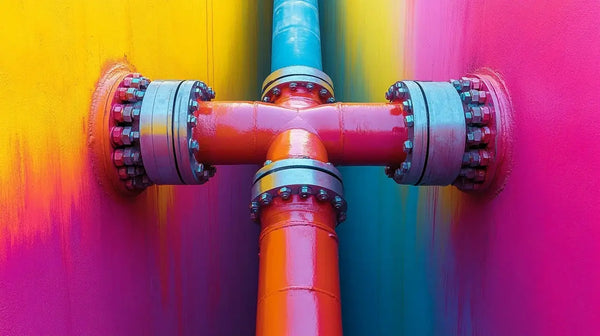
Regular maintenance and inspection of waterproof pipe cladding are essential for long-term performance:
-
Visual Inspections: Conduct regular visual checks for signs of damage, gaps, or deterioration.
-
Cleaning: Follow manufacturer guidelines for cleaning procedures, especially in hygienic environments.
-
Repair and Replacement: Address any damage promptly to prevent moisture ingress and insulation degradation.
-
Documentation: Keep records of inspections and maintenance for compliance and warranty purposes.
Conclusion
Waterproof pipe cladding is a critical component in commercial pipe insulation systems, offering protection against moisture, physical damage, and environmental factors. By choosing the right cladding material and ensuring proper installation and maintenance, businesses can significantly enhance the efficiency, longevity, and safety of their piping systems.
For more information on specific pipe insulation and cladding products, visit our pipe insulation and insulation cladding collections. Our team at Insulation & More is always ready to assist you in finding the best solutions for your commercial insulation needs.
Frequently Asked Questions (FAQs)
1. Can waterproof pipe cladding be used on both hot and cold pipes?
Answer: Yes, waterproof pipe cladding can be used on both hot and cold pipes. However, it's crucial to choose the right type of cladding material based on the temperature range of the pipes. For example:
- For cold pipes, materials like PIB cladding or certain types of elastomeric foams are excellent choices as they prevent condensation.
- For hot pipes, metal claddings like aluminium or Aluzinc are often preferred due to their heat resistance and reflective properties.
Always consult the manufacturer's specifications for the suitable temperature range of the cladding material.
2. How does waterproof pipe cladding differ from weatherproof pipe cladding?
Answer: While the terms are often used interchangeably, there is a subtle difference:
- Waterproof cladding specifically focuses on preventing water penetration. It creates a barrier that water cannot pass through under normal conditions.
- Weatherproof cladding is a broader term that includes protection against various weather elements such as water, UV radiation, wind, and temperature fluctuations.
In practice, many high-quality pipe cladding materials, like those in our insulation cladding collection, are both waterproof and weatherproof, offering comprehensive protection for exterior applications.
3. Is it necessary to use waterproof cladding for indoor pipe insulation?
Answer: While waterproof cladding is not always necessary for indoor pipe insulation, it can be beneficial in certain situations:
- In areas with high humidity or potential for condensation (e.g., basements, laundry rooms)
- Near water sources or where there's a risk of water exposure (e.g., kitchens, bathrooms)
- In industrial settings where pipes may be exposed to cleaning processes or chemical splashes
For standard indoor applications without these risks, non-waterproof cladding options may be sufficient. However, using waterproof cladding can provide an extra layer of protection and potentially extend the life of your insulation system.
4. How often should waterproof pipe cladding be replaced?
Answer: The lifespan of waterproof pipe cladding can vary significantly depending on the material used and the environmental conditions. Generally:
- High-quality metal claddings like aluminum or Aluzinc can last 20-30 years or more with proper maintenance.
- Polymer-based claddings like PIB or EPDM typically last 10-20 years.
- In harsh environments or with constant exposure to chemicals or UV radiation, replacement might be needed more frequently.
Regular inspections are crucial. If you notice any signs of damage, deterioration, or loss of water resistance, it's time to consider replacement. Always follow manufacturer recommendations for expected lifespan and replacement intervals.
5. Can I install waterproof pipe cladding myself, or should I hire a professional?
Answer: While some simpler cladding installations can be DIY projects, for commercial applications, it's generally recommended to hire a professional. Here's why:
- Professionals have the experience to ensure proper fit and sealing, which is crucial for waterproofing.
- Commercial applications often involve complex pipe systems that require specialized knowledge and tools.
- Incorrect installation can lead to gaps or weak points, compromising the waterproof integrity.
- Some warranties may be voided if not installed by a certified professional.
If you're considering DIY installation, consult our installation guides and product specifications first. For large-scale or critical applications, professional installation is always the safest choice.
6. How does waterproof pipe cladding impact the R-value of the insulation system?
Answer: Waterproof pipe cladding generally doesn't significantly impact the R-value (thermal resistance) of the insulation system directly. However, it plays a crucial role in maintaining the insulation's effectiveness:
- By keeping the insulation dry, cladding prevents the degradation of R-value that occurs when insulation becomes wet.
- Some reflective claddings, like aluminum, can slightly improve the overall thermal performance by reflecting radiant heat.
- Properly installed cladding can reduce air movement around the insulation, which helps maintain its thermal efficiency.
For more information on R-values and insulation performance, check out our article on understanding R-values in insulation.
7. Are there eco-friendly options for waterproof pipe cladding?
Answer: Yes, there are increasingly eco-friendly options available for waterproof pipe cladding:
- Recycled aluminum cladding: Made from recycled materials and fully recyclable at the end of its life.
- Bio-based polymers: Some manufacturers are developing cladding materials made from renewable resources.
- PVC-free options: Materials like polyethylene offer PVC-free alternatives.
When selecting eco-friendly options, consider both the material's composition and its longevity. A durable cladding that lasts longer can be more environmentally friendly in the long run, even if it's not made from recycled materials.
8. How does waterproof pipe cladding handle thermal expansion and contraction?
Answer: Thermal expansion and contraction are important considerations in pipe cladding installation, especially for systems with significant temperature fluctuations. Here's how it's typically managed:
- Expansion joints: These are built into the cladding system to allow for movement.
- Flexible materials: Some cladding materials, like certain polymers, have inherent flexibility to accommodate movement.
- Installation techniques: Proper installation includes leaving small gaps or using sliding joints to allow for expansion.
The specific approach depends on the cladding material, pipe system, and expected temperature range. Our technical team can provide guidance on the best solutions for your specific application.
9. Can waterproof pipe cladding be painted or customized for aesthetic purposes?
Answer: The ability to paint or customize waterproof pipe cladding depends on the material:
- Metal claddings like aluminum can often be painted, but it's crucial to use compatible paints that won't compromise the cladding's properties.
- Some polymer-based claddings come in various colors, eliminating the need for painting.
- Certain cladding materials, like Isogenopak, are designed to maintain a specific surface finish and shouldn't be painted.
If aesthetics are a primary concern, discuss color options with your supplier before installation. For customization needs, consult with a professional to ensure any modifications don't affect the cladding's waterproof properties.
10. How does waterproof pipe cladding contribute to noise reduction in piping systems?
Answer: While the primary purpose of waterproof pipe cladding is moisture protection, it can contribute to noise reduction in piping systems:
- Mass: The additional layer of cladding adds mass to the system, which can help dampen vibrations and reduce noise transmission.
- Decoupling: Some cladding systems create a separation between the pipe and the outer environment, which can reduce structure-borne noise.
- Material properties: Certain cladding materials, especially those with foam-like structures, can absorb sound to some degree.
For applications where noise reduction is a primary concern, consider combining waterproof cladding with specific acoustic insulation materials for optimal results.

